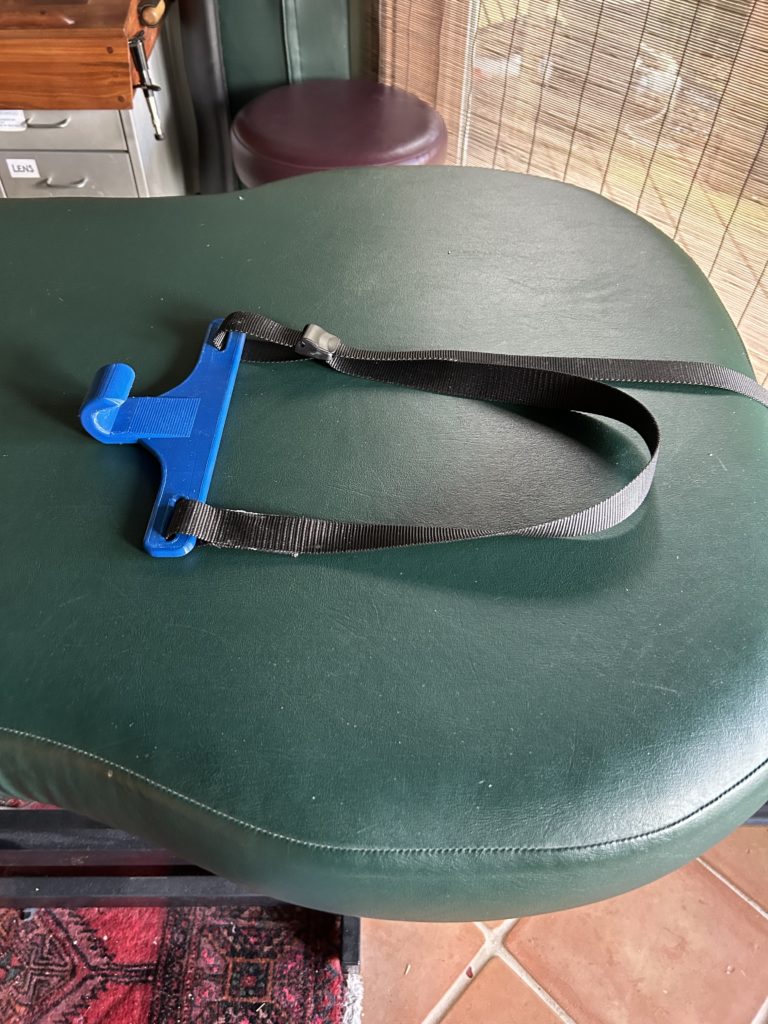When this writer was a pre-teen living in southern Africa, coming from Connecticut, he was astonished to see people comfortably carrying heavy loads on their heads.1 This was more common than seeing things carried in the arms. This was so novel a sight that it may have imprinted his interest in manual and movement therapies – how can the neck support a heavy load? This question is addressed in many posts on this blog about manual therapy, stance and gait, and tensegrity and connective tissues. For this writer, the question has flipped so he now asks how we can carry heavy loads in our arms.
We evolved arms from legs. They therefore still have embedded within their function/structure the gross motor skills that evolved to move around which we still engage when crawling. However, in the arms, we further evolved fine motor skills for tool use to manipulate our surroundings. When we carry stuff, we utilize a combination of both of these neuromotor faculties.
The arms are foundationally tensional structures. Even when we walk on them, crawling, the way they connect to our core, as for all mammalian morphologies, is in tension (the front legs pull and the rear legs push). The only compressional element, our Clavicle, is incapable of heavy compressional loads. Its job is to align the arm/foreleg to support body weight in tension, by soft tissue. A benefit/prerequisite of this configuration is that it facilitates shock absorption when a quadruped is running as they land on their forelegs.
Our necks and backs have two functionally and structurally different layers of muscles. The outermost superficial layer is the large muscles we perform work with. Underneath this layer is another layer dedicated to structural support. The front of the body mostly works in flexion and has a somewhat different configuration. The back, working in extension, has to reset from an action, and maintain postural control. This can be summarized that the front of the body works in activation and the back in inhibition. When we use the large superficial muscles of one arm in an action, we use the deep muscles on the other side to stabilize the body for this action. For example, when we lift an object with our right arm, large muscles attached to the right side of the neck and base of the skull are engaged. To prevent the neck twisting and the head tipping to the right the deep muscles on the left side engage – stabilizing the body.
Repetitive actions like playing a musical instrument or carrying a purse on one shoulder usually result in adhesions in the deep soft tissues. The body will always seek the most efficient means to move, and if this means restricting the scope of movement within specific tissues, it is pleased to comply. These deep adhesions are why massage often provides some relief, but the complaint may return within a few hours. Treatment requires working at the level of the adhesions, a slow and somewhat intense process. These adhesions can become so dense that when palpated they feel like bone and require significant attention to begin to resolve.
When carrying a load in the arms the center of mass dynamics of the body shift. The further from the gravitational centerline of the body the center of mass shifts the more engaged the deep postural soft tissues activate. This is why carrying a load on the head is so effective – postural control remains minimally engaged, maximally maintaining flexibility and range of motion. Additionally, the structural core of our body is much better adapted to compressional loads.
This writer is no longer at an age where learning to carry stuff on his head is a viable solution to this conundrum. However, he recently saw a picture of a Sherpa on Mt Everest carrying an immense load using a head strap, leaving his arms free for the climb ahead. Seeing this picture motivated this writer to explore the possibilities of this design.
HEAD STRAP FOR LOAD CARRYING
This design for a head strap is after several iterations. The first issue encountered was that the head strap limits head rotation. This may be fine for a Sherpa walking on a trail, but restricting situational awareness in an urban setting is not recommended. The strap-to-bar configuration allows for the head to maintain most of its side-to-side movement(the load pivots2). For this writer adjusting the contact point of the load at the top of the Thoracic Spine, above the shoulders, worked best.
Observations:
Testing this immediately changed this writer’s postural organization. The head responds to this challenge by activating postural control. It is not apparent how useful this would be in an urban setting and using it certainly would draw perhaps unwanted attention, but as a postural training tool, it may be very effective for activating the involved reflexes.
- Head-Carrying – Wikipedia ↩︎
- The length of the pivot arm should extend beyond the width of the ears. ↩︎


